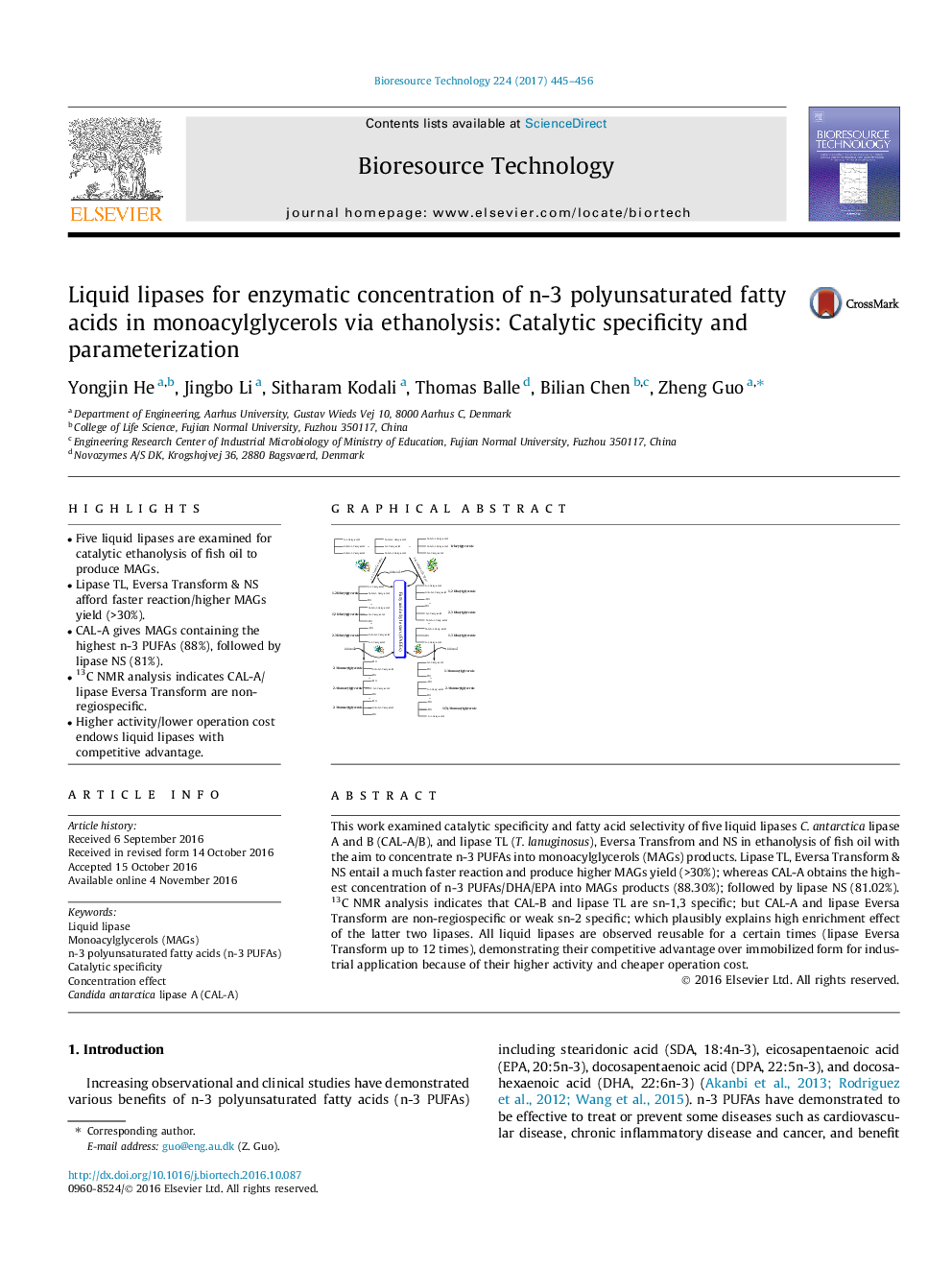| Article ID | Journal | Published Year | Pages | File Type |
|---|---|---|---|---|
| 4997864 | Bioresource Technology | 2017 | 12 Pages |
â¢Five liquid lipases are examined for catalytic ethanolysis of fish oil to produce MAGs.â¢Lipase TL, Eversa Transform & NS afford faster reaction/higher MAGs yield (>30%).â¢CAL-A gives MAGs containing the highest n-3 PUFAs (88%), followed by lipase NS (81%).â¢13C NMR analysis indicates CAL-A/lipase Eversa Transform are non-regiospecific.â¢Higher activity/lower operation cost endows liquid lipases with competitive advantage.
This work examined catalytic specificity and fatty acid selectivity of five liquid lipases C. antarctica lipase A and B (CAL-A/B), and lipase TL (T. lanuginosus), Eversa Transfrom and NS in ethanolysis of fish oil with the aim to concentrate n-3 PUFAs into monoacylglycerols (MAGs) products. Lipase TL, Eversa Transform & NS entail a much faster reaction and produce higher MAGs yield (>30%); whereas CAL-A obtains the highest concentration of n-3 PUFAs/DHA/EPA into MAGs products (88.30%); followed by lipase NS (81.02%). 13C NMR analysis indicates that CAL-B and lipase TL are sn-1,3 specific; but CAL-A and lipase Eversa Transform are non-regiospecific or weak sn-2 specific; which plausibly explains high enrichment effect of the latter two lipases. All liquid lipases are observed reusable for a certain times (lipase Eversa Transform up to 12 times), demonstrating their competitive advantage over immobilized form for industrial application because of their higher activity and cheaper operation cost.
Graphical abstractDownload high-res image (94KB)Download full-size image
